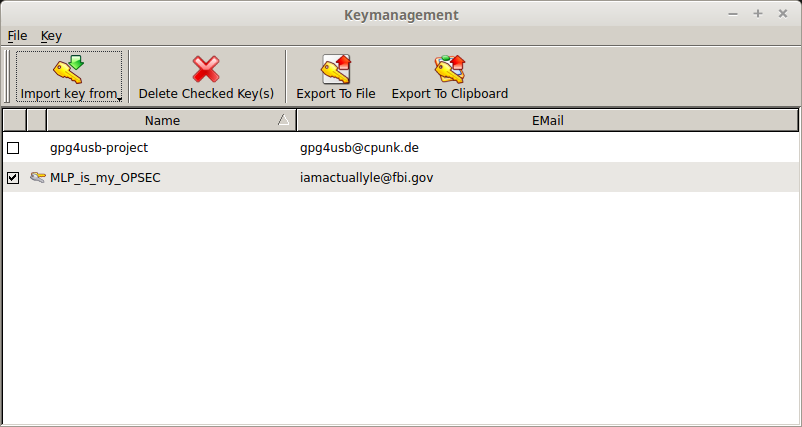Lately I been using PGP more and more… and I wanted to have my portable application on a flash drive where I could carry all of the private and public keys (of course that if I loose my flash drive, I am at risk – I know that). But, there is really not good documentation that walks through a first time user on how to accomplish this. So, here is my attempt to those first time users on how to do it.


- You need a Windows machine (physical or virtual)
- Download Gpg4Win -> http://www.gpg4win.org/
In my case, I tested this with version 2.2.4 - When installing Gpg4Win, make sure that you have enable all of these options
GnuPG 2.0.27
Kleopatra 2.2.0-git945878c
GPA 0.9.7
GpgOL 1.2.1
GpgEX 1.0.1
Claws Mail 3.9.1
Kompendium (de) 3.0.0
Compendium (en) 3.0.0 - Once you are done with the installation, then you can run the following command in order to make your own Gpg4Win portable application. Keep in mind that you can go two different routes. Full or Lite. In my example, I will show you how to have it fully loaded.
- Open command prompt (CLI)
- cd to the path where GPG4Win is located
If you use the defaults it will be at “C:Program Files (x86)GNUGnuPG” - Run “mkportable.exe –full –verbose TARGETDIR”
where TARGETDIR in this case will be “E:gpg4winapp” - Then once the program runs, you will be able to open Kleopatra and there you have it
- Enjoy!!!
Gpg4usb On Macbook Pro
This worked for both my 2018 Mac mini and my wife’s 2019 MacBook Pro. As far as I can tell, this network manager restart needs to happen every time you log in so memorize that command and you should be good. Spent hours looking for a solution for this and accidentally stumbled on the solution which was posted on a Linux Mint forum last year. Useful alternatives to the usual - gpg4usb or locknote. A handy alternative, portable and flexible, is to use an encrypted text file and whatever format you want. I hate having to split my hundreds of credentials into URL, username, password, notes, PINs, etc, they simply don't all break down that nicely leading to a bit of messy shoehorning. Providing a mac-binary is on our TODO-list. Our aim is, to give anyone the possibility to send and receive secure encrypted messages anywhere - on any computer out there, no matter if Microsoft Windows(TM) or Linux is running on it. GnuPG distributions are signed. It is wise and more secure to check out for their integrity. Remarks: Pinentry is a collection of passphrase entry dialogs which is required for almost all usages of GnuPG.; GPGME is the standard library to access GnuPG functions from programming languages.; Scute is a PKCS#11 provider on top of GnuPG.; GPA is a graphical frontend to GnuPG.